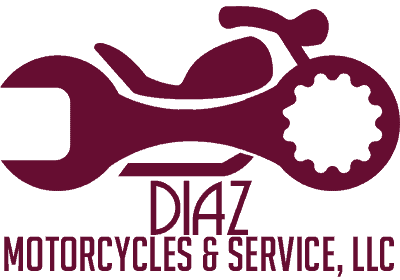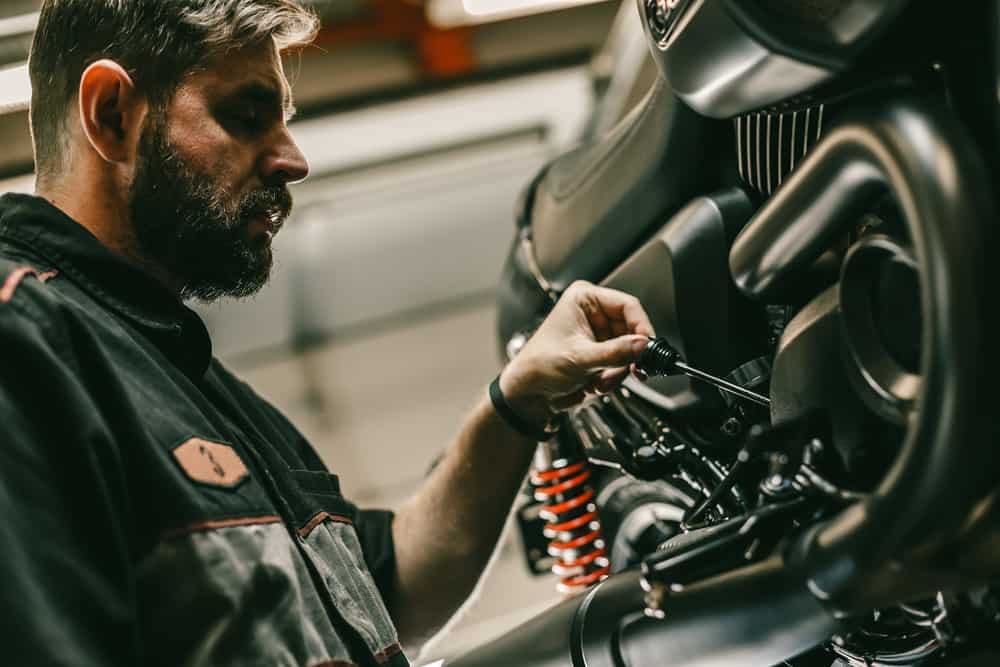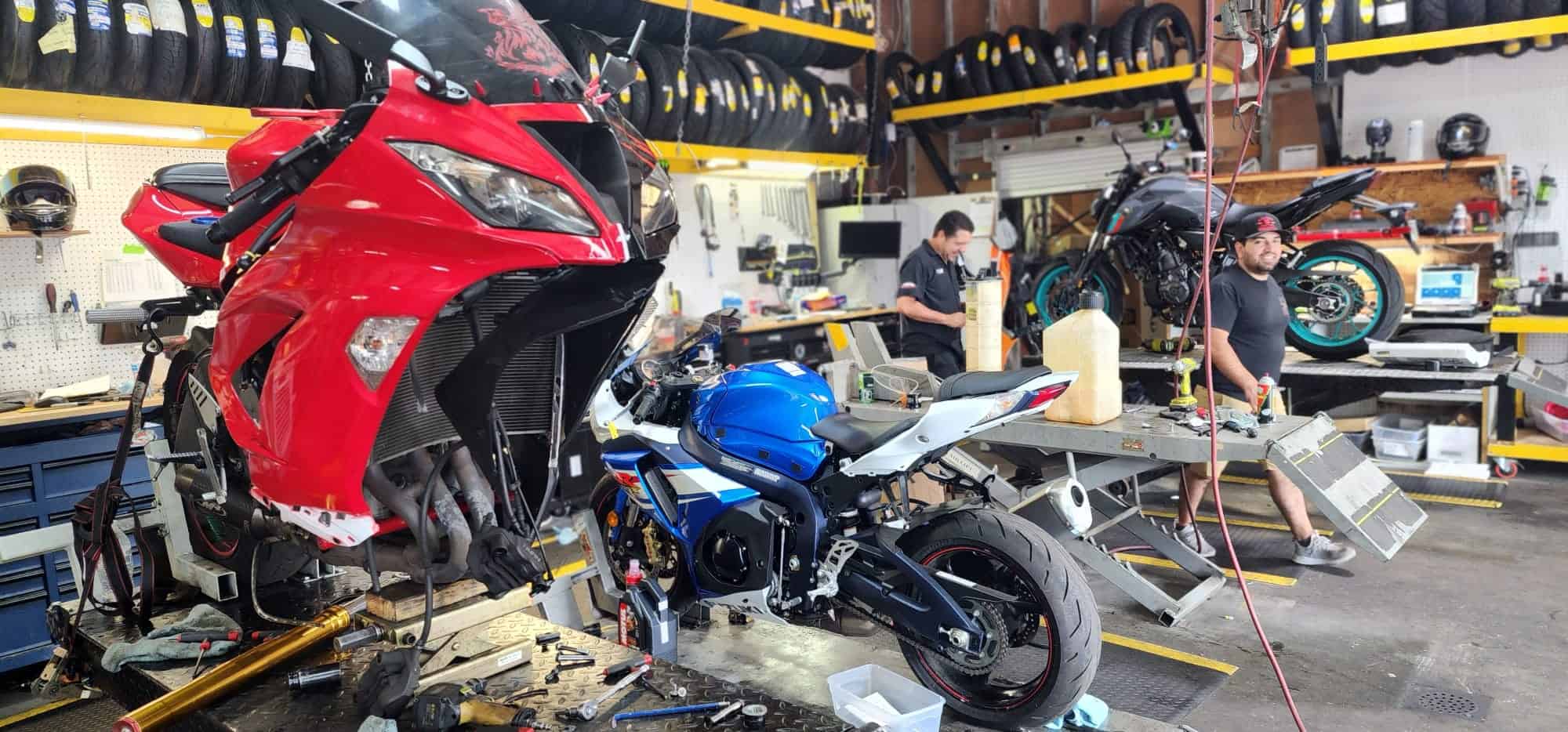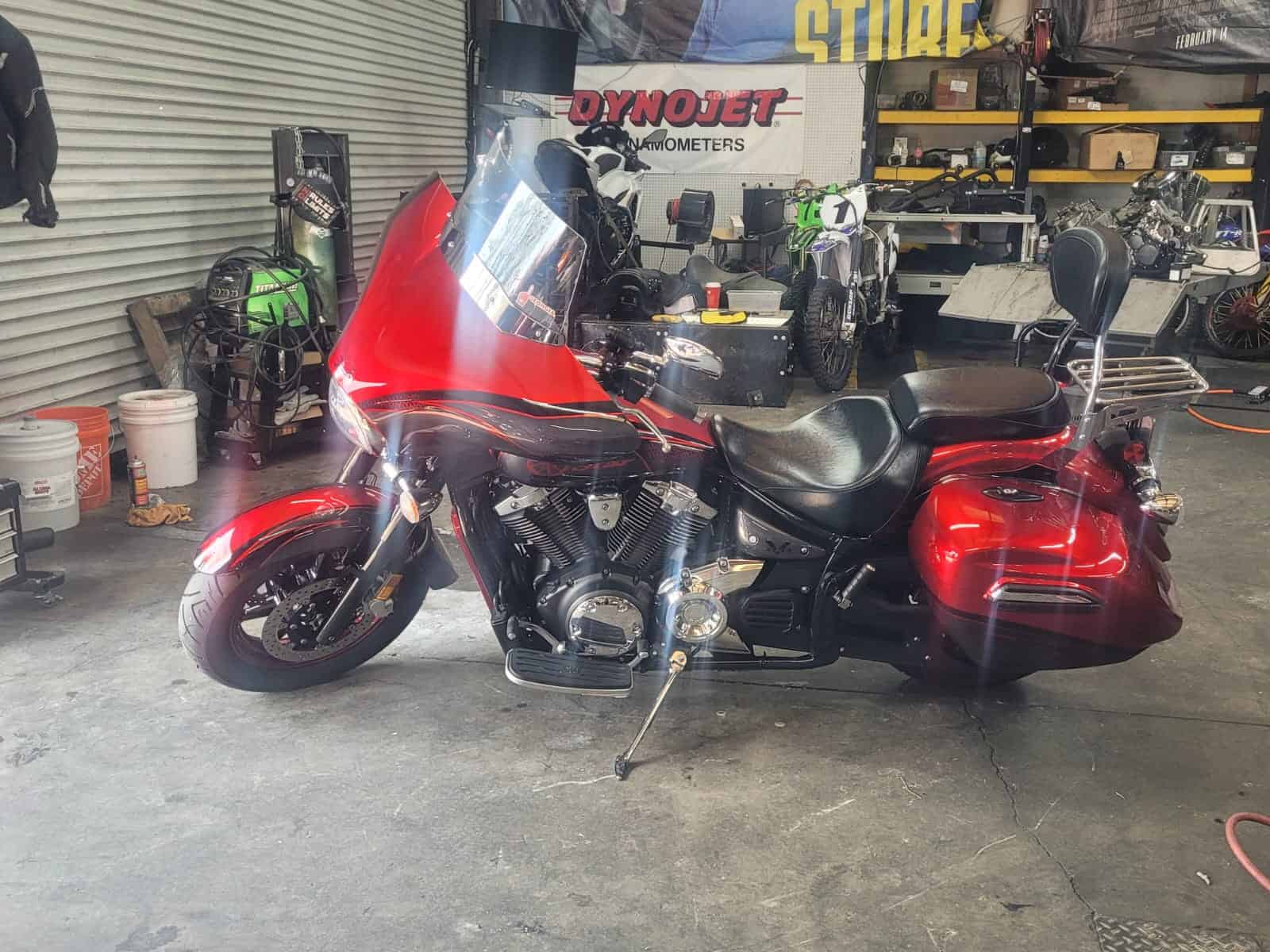Summary:
Why Pre-Season Motorcycle Maintenance Matters
Think of pre-season maintenance as insurance for your riding season. After months of sitting idle, your motorcycle’s fluids have settled, seals may have dried out, and components have been exposed to temperature changes that affect their performance.
The cost of preventive maintenance pales in comparison to emergency repairs. A simple oil change and brake inspection now prevent engine damage and brake failure later. More importantly, it keeps you safe on Cobb County’s roads where traffic doesn’t forgive mechanical failures.
Your bike’s systems work together, and one neglected component can cascade into multiple problems. Fresh oil protects your engine, properly inflated tires improve handling, and clean air filters ensure optimal performance. Skip these basics, and you’re setting yourself up for problems that could have been easily prevented.
Essential Fluids Check: Oil, Brake Fluid, and Coolant
Start with your engine oil—it’s the lifeblood of your motorcycle. After sitting all winter, oil settles and can develop moisture contamination. Check the level first, but don’t stop there. Look at the color and consistency. Dark, thick oil needs changing regardless of mileage. Fresh oil should be amber or black (depending on type) and flow smoothly when you check the dipstick.
Brake fluid deserves special attention because it’s hygroscopic—it absorbs moisture from the air over time. This moisture lowers the boiling point and can cause brake fade when you need stopping power most. If your brake fluid looks dark or feels spongy when you squeeze the lever, it’s time for a flush. Clear, clean brake fluid in the reservoir is what you want to see.
Don’t forget your coolant if you have a liquid-cooled engine. Check the level in both the radiator and overflow tank. The coolant should be clean and the proper color for your bike. If it’s rusty, has particles floating in it, or the level has dropped significantly, you’ve got issues that need addressing before you ride.
Your bike’s cooling system works harder in Georgia’s heat, so starting the season with fresh coolant prevents overheating problems when temperatures climb. A simple coolant flush every two years keeps your engine running at optimal temperatures and prevents expensive internal damage.
Tire Safety: Pressure, Tread, and Damage Inspection
Start with your engine oil—it’s the lifeblood of your motorcycle. After sitting all winter, oil settles and can develop moisture contamination. Check the level first, but don’t stop there. Look at the color and consistency. Dark, thick oil needs changing regardless of mileage. Fresh oil should be amber or black (depending on type) and flow smoothly when you check the dipstick.
Brake fluid deserves special attention because it’s hygroscopic—it absorbs moisture from the air over time. This moisture lowers the boiling point and can cause brake fade when you need stopping power most. If your brake fluid looks dark or feels spongy when you squeeze the lever, it’s time for a flush. Clear, clean brake fluid in the reservoir is what you want to see.
Don’t forget your coolant if you have a liquid-cooled engine. Check the level in both the radiator and overflow tank. The coolant should be clean and the proper color for your bike. If it’s rusty, has particles floating in it, or the level has dropped significantly, you’ve got issues that need addressing before you ride.
Your bike’s cooling system works harder in Georgia’s heat, so starting the season with fresh coolant prevents overheating problems when temperatures climb. A simple coolant flush every two years keeps your engine running at optimal temperatures and prevents expensive internal damage.
Critical Safety Systems: Brakes, Lights, and Controls
Your brakes are your primary safety system, and they need thorough inspection before the first ride. Check your brake pads through the inspection windows or by removing the wheels if necessary. Worn pads create longer stopping distances and can damage your rotors if they wear down to the metal backing plates.
Test your brake lever and pedal feel. They should be firm and responsive, not spongy or requiring excessive travel to engage. If your brakes feel different than they did last season, there’s likely air in the lines or the fluid needs changing. Don’t compromise on brake performance—it’s not worth the risk.
Your electrical system keeps you visible and communicates your intentions to other drivers. Test all lights: headlight (both high and low beam), taillight, brake light, and turn signals. Replace any burned-out bulbs and clean dirty lenses that reduce visibility. Check your horn while you’re at it—it’s a simple safety device that can prevent accidents.
Battery and Electrical System Maintenance
Your battery takes a beating during storage, especially in Georgia’s temperature swings. Start by checking the terminals for corrosion—white, green, or blue buildup that prevents proper electrical connection. Clean terminals with a wire brush and baking soda solution, then apply dielectric grease to prevent future corrosion.
Test your battery’s voltage with a multimeter. A fully charged battery should read around 12.6 volts with the engine off. If it’s significantly lower, try charging it with a battery tender. If the battery won’t hold a charge or drops below 12 volts quickly, replacement is necessary. Don’t wait for a dead battery to strand you on the road.
Check your fuses while you’re working on the electrical system. A blown fuse is one of the most frustrating reasons for a breakdown because it’s so preventable. Inspect each fuse and replace any that are blown. Keep spare fuses in your toolkit—they’re cheap insurance against electrical problems.
Your charging system needs attention too. With the engine running, your battery voltage should read between 13.5 and 14.5 volts. If it’s outside this range, your charging system isn’t working properly and needs professional diagnosis. A failing charging system will leave you stranded with a dead battery, usually at the worst possible time.
Chain, Cables, and Control Maintenance
Your drive chain transfers power from the engine to the rear wheel, and it needs regular attention to function properly. Check the chain tension according to your owner’s manual—too tight and you’ll damage the transmission and rear wheel bearings, too loose and the chain can jump off the sprockets or break.
Clean your chain with appropriate degreaser and inspect each link for damage, stiff spots, or excessive wear. A properly maintained chain should move smoothly without binding or tight spots. After cleaning, apply fresh chain lubricant to all surfaces, but don’t over-lubricate as excess lube attracts dirt and debris.
Inspect your cables for fraying, kinks, or damage. Clutch, throttle, and brake cables should move smoothly without binding or excessive free play. Lubricate cable ends and adjust free play according to your service manual. Damaged cables can fail suddenly, leaving you without critical controls when you need them most.
Your controls should operate smoothly and return to their proper positions. Check that your throttle snaps back quickly when released and that your clutch lever has the proper free play. Sticky or binding controls can cause accidents, especially in emergency situations where split-second responses matter.
Getting Your Motorcycle Ready for Georgia's Riding Season
A thorough pre-season inspection takes time, but it’s the foundation of a safe, enjoyable riding season. You’ve covered the essential systems that keep you safe and your bike running reliably. Remember, some maintenance tasks are perfect for DIY enthusiasts, while others require professional expertise and specialized tools.
When you find issues beyond your comfort level or discover problems that need professional diagnosis, don’t hesitate to seek expert help. The investment in proper maintenance pays dividends in reliability, safety, and peace of mind throughout the riding season.
For comprehensive motorcycle maintenance and repair services in Cobb County, we at Diaz Motorcycles and Service provide the expertise and honest service you need to keep your bike in peak condition. Our experienced technicians understand what it takes to prepare your motorcycle for Georgia’s roads and weather conditions.



